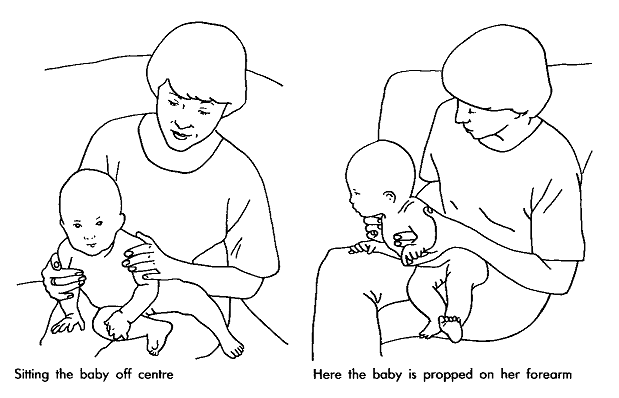GM.A.16 ON PULLED TO SIT, KEEPS HEAD IN LINE WITH BODY
The muscles at the front and back or the neck must work together equally for the baby to perform this skill. All the pick up and put down handling techniques have been preparing your baby for this.
How to Assess
Method: Place your child on her back. Hold her wrists and slowly pull her up to sitting. Score plus if your child lifts her head and holds it steady as soon as her head leaves the surface. It is acceptable for her to hunch her shoulders to help with this movement.
How to Teach
Continuing on from GM.A.8, frequent practice will eventually result in success. Don’t forget to:
- Get eye contact before you start
- Always give a consistent direction
- Move slowly to allow your child to maintain control
- Practise going from sitting to lying as well as from lying to sitting
- Stop at various stages of the movement and talk to her, to make her work even harder
Positioning, Carrying and Playing
While concentrating on this skill, don’t neglect your child’s development on her tummy. At this stage she needs some time each day on her tummy, back and sides. Never leave her on her back if she is sleepy or inactive.Continue to carry her in the crook of your arm, as described in GM.A.8, supporting her as low on her trunk as she can manage. You can exercise with your child! Lie on your back, with your child sitting on your tummy. Now sit up and let the child lie back. When you lie back, your child will be pulled to sitting. For the older delayed child, place a small toy or hall of yarn under her chin. Encourage her to keep it there while you pull her to sit. Once your child controls her head well when pulled to sit, try doing it with her body slightly twisted. This will prepare her for the more sophisticated skills she is working towards, where rotation of the trunk is so important.

